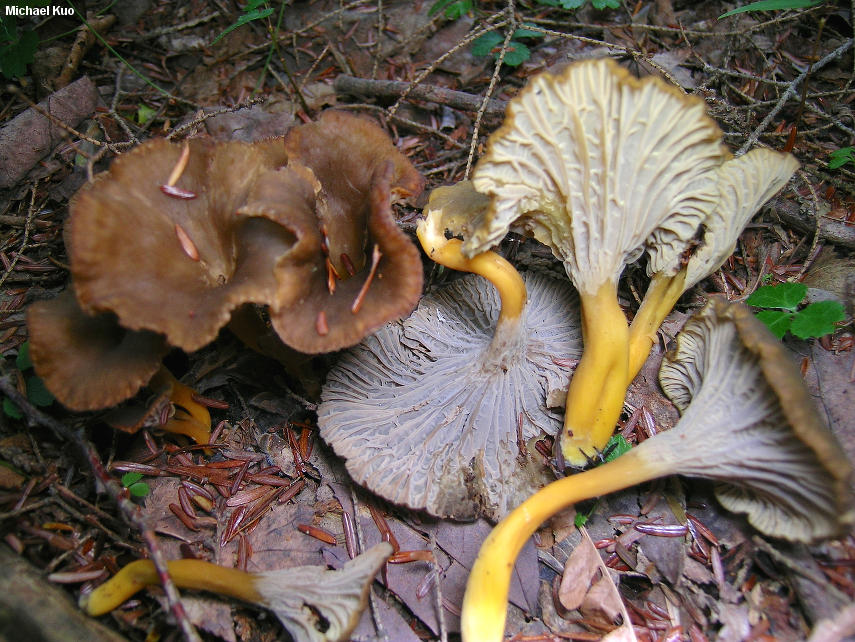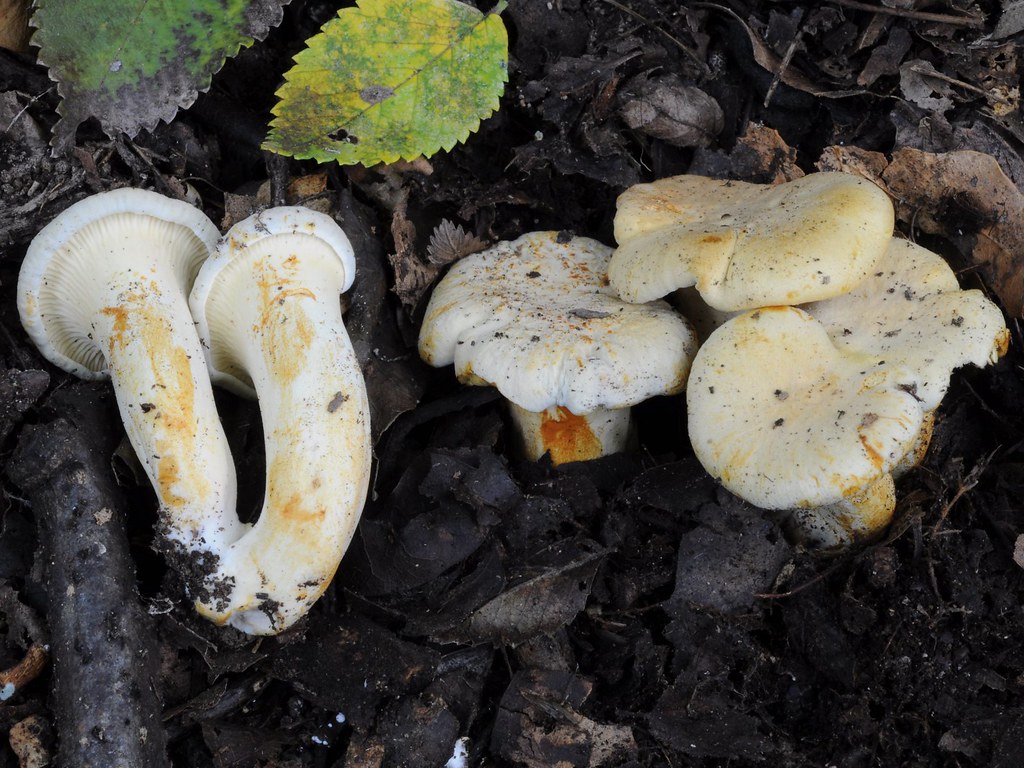Sue Pertwee-Tyr
Accuphase all the way down
If you're having one of those, make sure you go appropriately toadstooled upCool, a fungus fight!
A mushroom mêlée if you will.
Joe
If you're having one of those, make sure you go appropriately toadstooled upCool, a fungus fight!
A mushroom mêlée if you will.
Joe
Bit like this one that I posted about a few years ago. Mull reckoned it was a Clitocybe(?), IIRC, and he was right. Must be a Suffolk thing!

If you think that's a chanterelle, may I respectfully suggest you leave wild mushroom omelettes off the menu at your place?It looks like a chanterelle. They can be very pale and should have a faint smell of apricots. You can also take a spore print which should be a pale cream colour.
Yum,
DV
That reminds me of a potentially nasty incident a few years ago. I was out walking with the dogs through a local wood when I espied a lovely crop of Chanterelles. As I was gleefully picking them, a local couple were walking past, asked what I was up to, and I proceeded to wax lyrical about how lovely these mushrooms were to eat and suggested they help themselves to some, which they duly did. Back home, and the doubts started to nag...As I always say on this topic, unless you are ABSOLUTELY CERTAIN that you have an 'edible', do not eat it.
Unless you know a species.. which is a bit like recognising a familiar face, you need to consider size, season, smell, colour, habitat, etc,etc.
Unlike others on this thread I gave two tests that must be met and so far as I can see no one has performed these - well one of them takes 3 days. It was only a suggestion based on just one photo and no info about its location and what other mushrooms were spotted within the vicinity. These are also valid markers. There are a large variety of chanterelles varying from almost white to yellow and this just might be an odd one crossed with spores from abroad but without tests we won't know. Photos alone are no good.If you think that's a chanterelle, may I respectfully suggest you leave wild mushroom omelettes off the menu at your place?
You may be correct but without tests we won't know will we? A photo is not enough.Definitely not a chanterelle.


